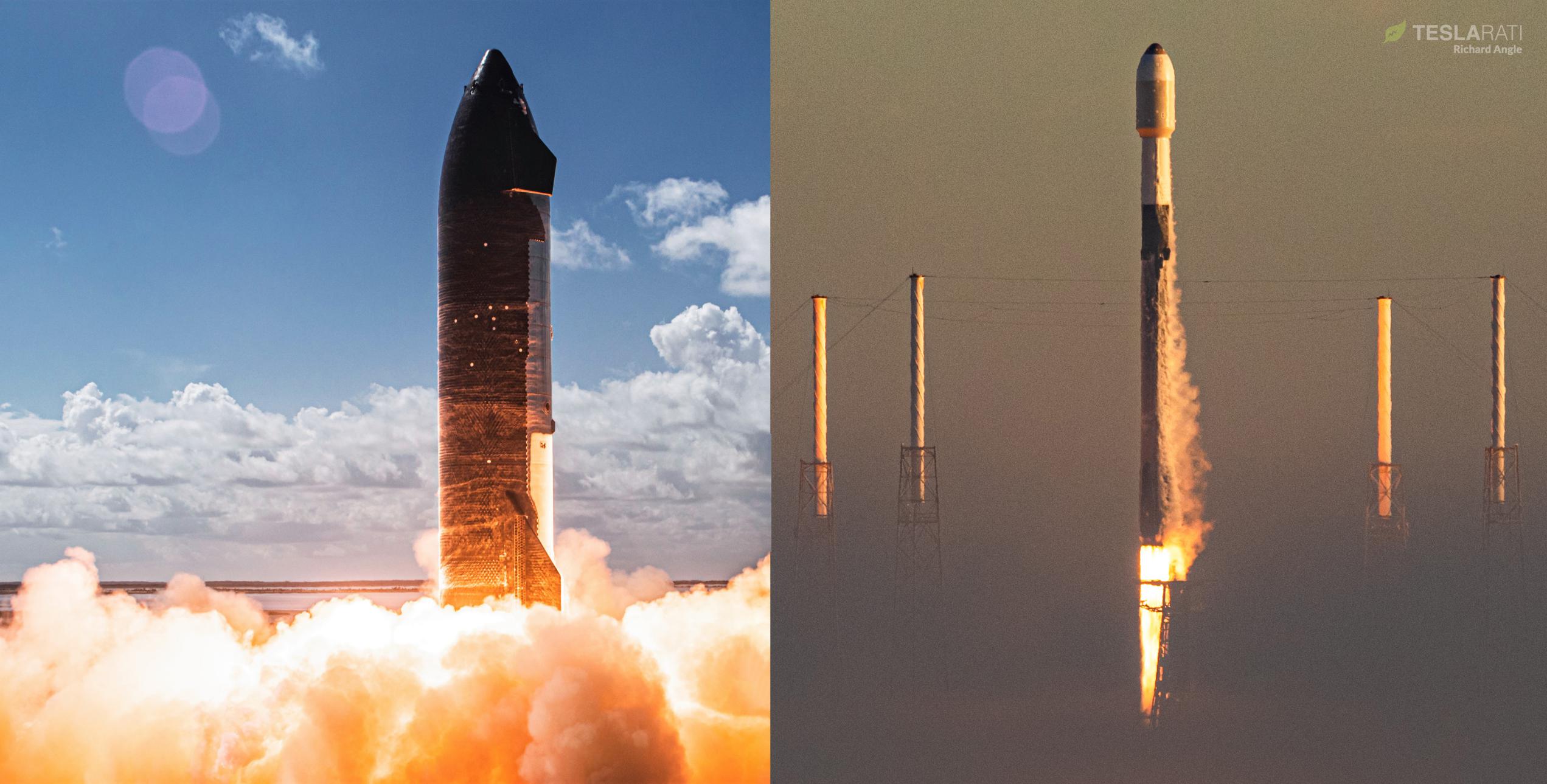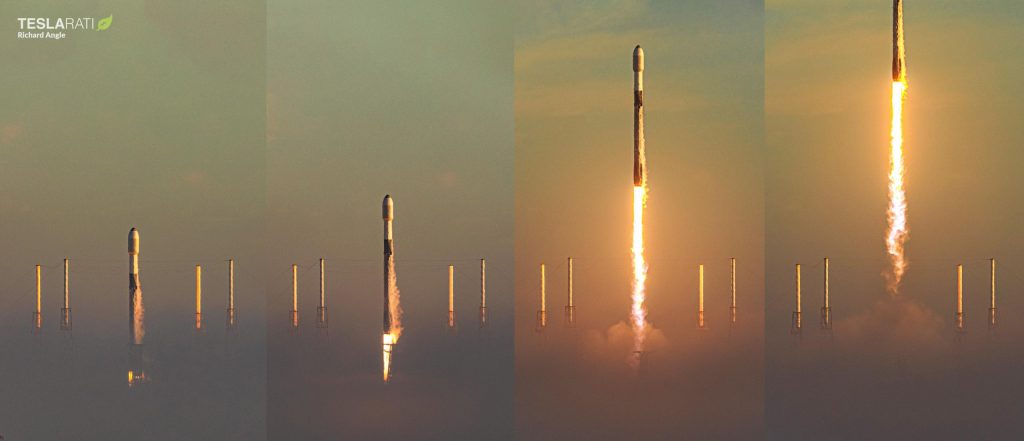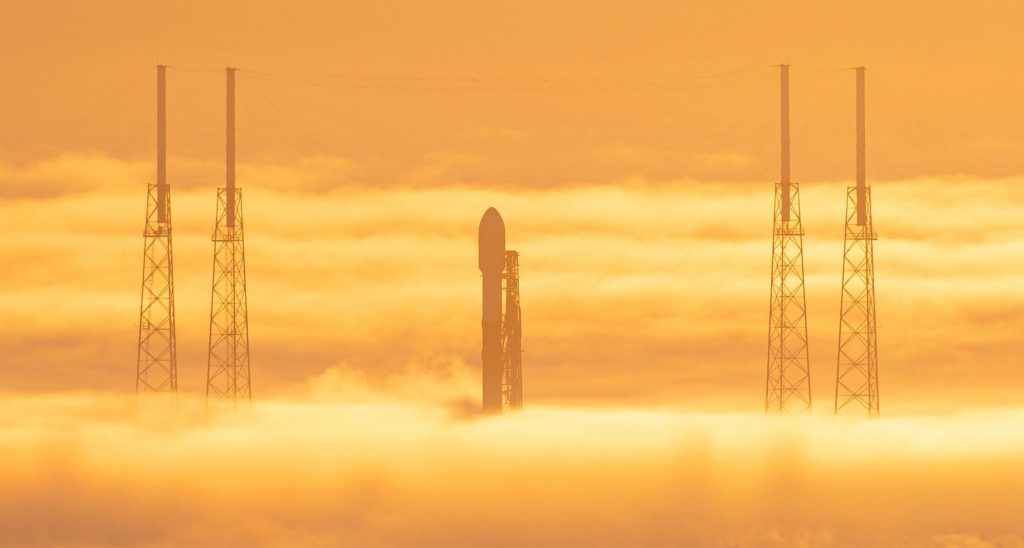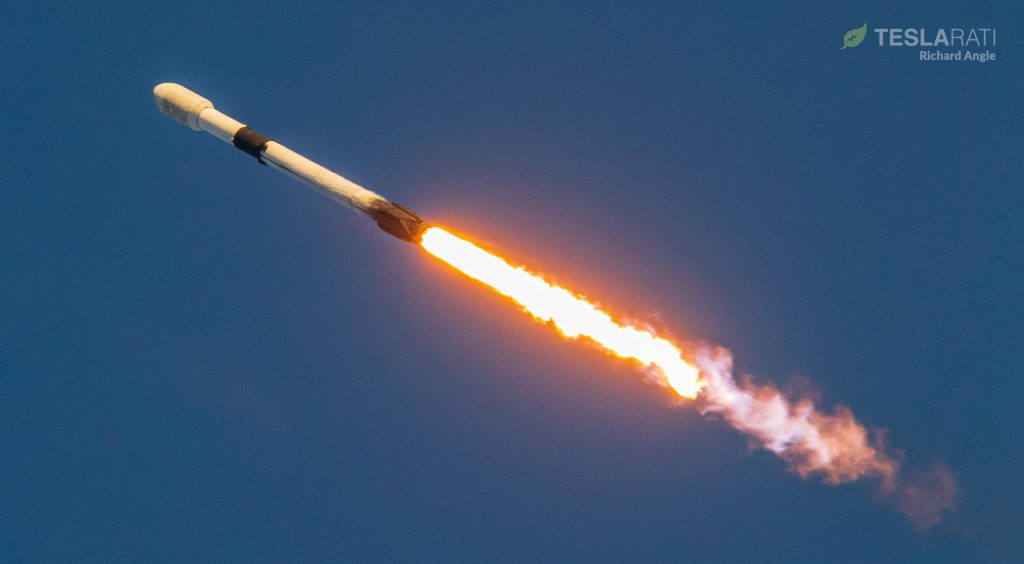

News
SpaceX fires up six-engine Starship, aces Starlink launch 18 hours apart
SpaceX has rounded out a jam-packed week of spaceflight activity by completing a record-breaking Starship static fire and first East Coast Starlink launch in half a year less than a day apart.
The eventful period began on November 8th, when Crew Dragon C206 departed the International Space Station (ISS) with four Crew-2 astronauts aboard after almost 200 days in orbit. Just eight hours later, Crew Dragon became the first reusable orbital space capsule to successfully reach orbit and return to Earth twice while carrying astronauts. Less than two days later, Falcon 9 launched a new Crew Dragon and four Crew-3 astronauts into orbit on November 10th, marking SpaceX’s fifth successful crewed launch in a year and a half.

On November 11th, 21 hours after liftoff, Dragon C210 aced its first ISS rendezvous and docking and delivered its crew to the station 40 minutes ahead of schedule. Up next, after a week or two of delays and a great deal of anticipation, SpaceX’s first orbital-class Starship prototype completed the first static fire with a full complement of six Raptor engines around 1:13pm EST, November 12th. Originally scheduled to launch just a few hours before that static fire milestone, a Falcon 9 rocket then proceeded to launch Starlink 4-1 – SpaceX’s first dedicated Florida Starlink mission since May 2021 – a little over 18 hours later at 7:19am EST, November 13th.



The Starlink launch was especially spectacular. Graced by a thick bank of fog that almost fully covered the rocket and SpaceX’s LC-40 pad, Falcon 9 ultimately lifted off about half an hour after sunrise, soaring out of mist backlit by the early morning’s golden-hour light. A single-burn launch, Falcon 9’s expendable upper stage successfully deployed all 53 laser-linked Starlink V1.5 satellites just 16 minutes after liftoff, marking the beginning of the SpaceX constellation’s third ‘shell’. Having already completed Shell 1, it will take SpaceX another 29 launches to complete Shell 4, its mostly identical cousin. SpaceX also began launching Shell 2 – a semi-polar band of 720 satellites – in September.
On the Starship side of things, SpaceX and CEO Elon Musk quickly confirmed that Ship 20 had successfully fired up all six of its Raptor engines on the first try, potentially producing up to ~1110 tons (~2.45M lb) of thrust for about three seconds. If all six engines were briefly operated at full thrust, it would make Starship the most powerful active single-core rocket stage ever fired, narrowly beating out Russia’s Proton-M booster. Starship, of course, is an orbital upper stage, not a booster, and its Super Heavy first stage is expected to produce five or six times more thrust – the most powerful rocket booster by a healthy margin.
After Ship 20’s successful first-try six-engine static fire, it’s not clear what SpaceX’s next steps will be but there’s a good chance that the first flightworthy Super Heavy booster (B4) could be up on the docket.
News
Tesla begins Robotaxi certification push in Arizona: report
Tesla seems serious about expanding its Robotaxi service to several states in the coming months.

Tesla has initiated discussions with Arizona transportation regulators to certify its driverless Robotaxi service in the state, as per a recent report from Bloomberg News. The move follows Tesla’s launch of its Robotaxi pilot program in Austin, Texas, as well as CEO Elon Musk’s recent comments about the service’s expansion in the Bay Area.
The Arizona Department of Transportation confirmed to Bloomberg that Tesla has reached out to begin the certification process for autonomous ride-sharing operations in the state. While details remain limited, the outreach suggests that Tesla is serious about expanding its driverless Robotaxi service to several territories in the coming months.
The Arizona development comes as Tesla prepares to expand its service area in Austin this weekend, as per CEO Elon Musk in a post on X. Musk also stated that Tesla is targeting the San Francisco Bay Area as its next major market, with a potential launch “in a month or two,” pending regulatory approvals.
Tesla first launched its autonomous ride-hailing program on June 22 in Austin with a small fleet of Model Y vehicles, accompanied by a Tesla employee in the passenger seat to monitor safety. While still classified as a test, Musk has said the program will expand to about 1,000 vehicles in the coming months. Tesla will later upgrade its Robotaxi fleet with the Cyercab, a two-seater that is designed without a steering wheel.
Sightings of Cybercab castings around the Giga Texas complex suggests that Tesla may be ramping the initial trial production of the self-driving two-seater. Tesla, for its part, has noted in the past that volume production of the Cybercab is expected to start sometime next year.
In California, Tesla has already applied for a transportation charter-party carrier permit from the state’s Public Utilities Commission. The company is reportedly taking a phased approach to operating in California, with the Robotaxi service starting with pre-arranged rides for employees in vehicles with safety drivers.
News
Tesla sets November 6 date for 2025 Annual Shareholder Meeting
The automaker announced the date on Thursday in a Form 8-K.

Tesla has scheduled its 2025 annual shareholder meeting for November 6, addressing investor concerns that the company was nearing a legal deadline to hold the event.
The automaker announced the date on Thursday in a Form 8-K submitted to the United States Securities and Exchange Commission (SEC). The company also listed a new proposal submission deadline of July 31 for items to be included in the proxy statement.
Tesla’s announcement followed calls from a group of 27 shareholders, including the leaders of large public pension funds, which urged Tesla’s board to formally set the meeting date, as noted in a report from The Wall Street Journal.
The group noted that under Texas law, where Tesla is now incorporated, companies must hold annual meetings within 13 months of the last one if requested by shareholders. Tesla’s previous annual shareholder meeting was held on June 13, 2024, which placed the July 13 deadline in focus.
Tesla originally stated in its 2024 annual report that it would file its proxy statement by the end of April. However, an amended filing on April 30 indicated that the Board of Directors had not yet finalized a meeting date, at least at the time.
The April filing also confirmed that Tesla’s board had formed a special committee to evaluate certain matters related to CEO Elon Musk’s compensation plan. Musk’s CEO performance award remains at the center of a lengthy legal dispute in Delaware, Tesla’s former state of incorporation.
Due to the aftermath of Musk’s legal dispute about his compensation plan in Delaware, he has not been paid for his work at Tesla for several years. Musk, for his part, has noted that he is more concerned about his voting stake in Tesla than his actual salary.
At last year’s annual meeting, TSLA shareholders voted to reapprove Elon Musk’s compensation plan and ratified Tesla’s decision to relocate its legal domicile from Delaware to Texas.
Elon Musk
Grok coming to Tesla vehicles next week “at the latest:” Elon Musk
Grok’s rollout to Tesla vehicles is expected to begin next week at the latest.

Elon Musk announced on Thursday that Grok, the large language model developed by his startup xAI, will soon be available in Tesla vehicles. Grok’s rollout to Tesla vehicles is expected to begin next week at the latest, further deepening the ties between the two Elon Musk-led companies.
Tesla–xAI synergy
Musk confirmed the news on X shortly after livestreaming the release of Grok 4, xAI’s latest large language model. “Grok is coming to Tesla vehicles very soon. Next week at the latest,” Musk wrote in a post on social media platform X.
During the livestream, Musk and several members of the xAI team highlighted several upgrades to Grok 4’s voice capabilities and performance metrics, positioning the LLM as competitive with top-tier models from OpenAI and Google.
The in-vehicle integration of Grok marks a new chapter in Tesla’s AI development. While Tesla has long relied on in-house systems for autonomous driving and energy optimization, Grok’s integration would introduce conversational AI directly into its vehicles’ user experience. This integration could potentially improve customer interaction inside Tesla vehicles.
xAI and Tesla’s collaborative footprint
Grok’s upcoming rollout to Tesla vehicles adds to a growing business relationship between Tesla and xAI. Earlier this year, Tesla disclosed that it generated $198.3 million in revenue from commercial, consulting, and support agreements with xAI, as noted in a report from Bloomberg News. A large portion of that amount, however, came from the sale of Megapack energy storage systems to the artificial intelligence startup.
In July 2023, Musk polled X users about whether Tesla should invest $5 billion in xAI. While no formal investment has been made so far, 68% of poll participants voted yes, and Musk has since stated that the idea would be discussed with Tesla’s board.
-

 Elon Musk1 week ago
Elon Musk1 week agoTesla investors will be shocked by Jim Cramer’s latest assessment
-

 Elon Musk3 days ago
Elon Musk3 days agoElon Musk confirms Grok 4 launch on July 9 with livestream event
-

 Elon Musk11 hours ago
Elon Musk11 hours agoxAI launches Grok 4 with new $300/month SuperGrok Heavy subscription
-

 News7 days ago
News7 days agoTesla Model 3 ranks as the safest new car in Europe for 2025, per Euro NCAP tests
-

 Elon Musk2 weeks ago
Elon Musk2 weeks agoA Tesla just delivered itself to a customer autonomously, Elon Musk confirms
-

 Elon Musk1 week ago
Elon Musk1 week agoxAI’s Memphis data center receives air permit despite community criticism
-

 Elon Musk2 weeks ago
Elon Musk2 weeks agoTesla’s Omead Afshar, known as Elon Musk’s right-hand man, leaves company: reports
-

 News2 weeks ago
News2 weeks agoXiaomi CEO congratulates Tesla on first FSD delivery: “We have to continue learning!”


















